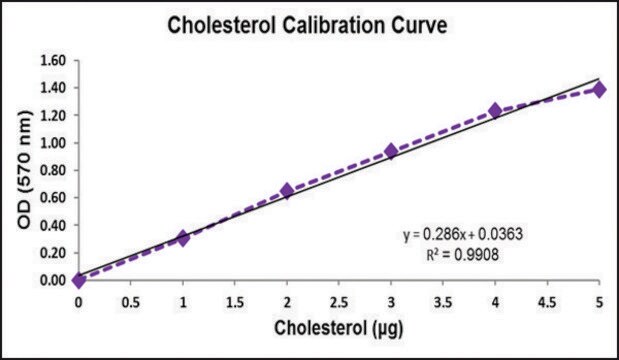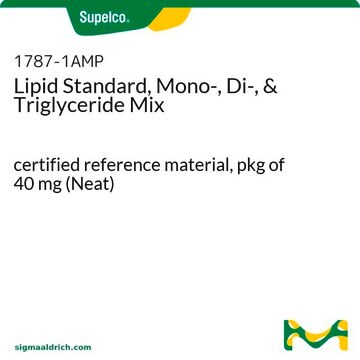TR0100
Serum Triglyceride Determination Kit
1 kit sufficient for 250 tests
Synonym(s):
Triglyceride and Free Glycerol Kits and Reagents
About This Item
Recommended Products
Looking for similar products? Visit Product Comparison Guide
Related Categories
General description
Application
Triglycerides are first hydrolyzed by lipoprotein lipase to glycerol and free fatty acids. Glycerol is then phosphorylated by adenosine-5′-triphosphate (ATP) forming glycerol-1-phosphate (G-1-P) and adenosine-5′-diphosphate (ADP) in the reaction catalyzed by glycerol kinase (GK). G-1-P is then oxidized by glycerol phosphate oxidase (GPO) to dihydroxy-acetone phosphate (DAP) and hydrogen peroxide (H2O2). Peroxidase (POD) catalyzes the coupling of H2O2 with 4-aminoantipyrine (4-AAP) and sodium
N-ethyl-N-(3-sulfopropyl) m-anisidine (ESPA) to produce a quinoneimine dye that shows an absorbance maximum at 540 nm. The increase in absorbance at 540 nm is directly proportional to triglyceride concentration of the sample.
Packaging
Suitability
Principle
Linkage
standard
Signal Word
Danger
Hazard Statements
Precautionary Statements
Hazard Classifications
Acute Tox. 4 Oral - Aquatic Acute 1 - Aquatic Chronic 1 - Eye Dam. 1 - Skin Irrit. 2
Storage Class Code
11 - Combustible Solids
Flash Point(F)
Not applicable
Flash Point(C)
Not applicable
Choose from one of the most recent versions:
Already Own This Product?
Find documentation for the products that you have recently purchased in the Document Library.
Customers Also Viewed
Articles
The potential for the prevention and treatment of cardiovascular disease through increased dietary intake of omega-3 (w-3) fish oils is not a recent scientific discovery.
Lipid Induced Insulin Resistance
Our team of scientists has experience in all areas of research including Life Science, Material Science, Chemical Synthesis, Chromatography, Analytical and many others.
Contact Technical Service







